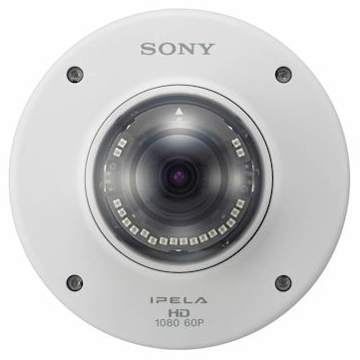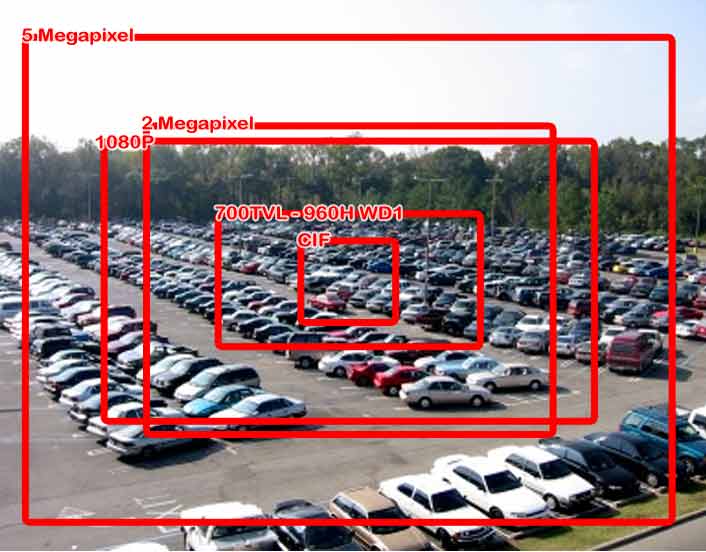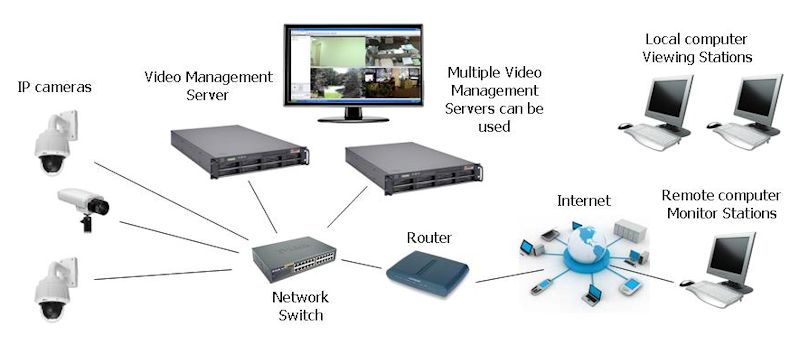Comparison of IP Cameras and Analog Cameras

Why should I use an IP camera when the analog cameras are so much cheaper?
That’s a question we get especially from those people who have been using analog CCTV (closed-circuit TV) systems for many years. Actually CCTV has been around for over 45 years. Olean, NY was the first municipality in the US to use cameras on its main street to help reduce crime (according to Wikipedia this was back in 1968).
Not only have the analog CCTV systems been around for a very long time, but they also haven’t really changed from their original capability. Well yes, they have gotten much cheaper, and there are efforts to use higher resolution cameras, but their capability hasn’t changed. The first systems were based on the TV standards established by the National Television System Committee (NTSC). The standard indicated that there should be 525 vertical TV lines, with a frame rate of 30 frames per second. Take a look at our video, How the Video Camera Works.
Today the same standard is still used by most analog cameras. The new HDcctv standard supports resolutions up to 1080p (2 megapixels). The only significant benefit is that the cameras can use existing coax cables, but you still need to change the DVR so that it will support the higher resolution. In most cases, it’s not the best choice for new security systems.
I can’t say that IP cameras are the new kid on the block because they have been around for over 15 years. We started selling them in 1997. Today they are beginning to dominate the CCTV market. What do IP cameras bring to the table? Well among other things, they provide much higher resolution. Today resolution is only limited by the sensors, microcomputers, and lenses of the camera, and can provide over 8 MegaPixels of resolution. And by the way, IP cameras are starting to come down in price and are now very close to the analog camera pricing. Take a look at our video, How the IP Camera Works.
Here are the reasons to consider IP camera systems.
The Resolution Makes a Big Difference

I think the much higher resolution makes the best case for using an IP camera system. Higher resolution means you can see a much wider area with the same detail. For example, if you need to see 50 pixels per foot (so you can identify a license plate number), you can see an area that’s about 12 feet wide (3.6 m) with an analog camera (with VGA resolution), but you can see an area that’s about 70 feet wide (21.3m) using a 10-megapixel camera. This means you can actually save money by using fewer cameras to see the wider area. Of course, this also allows you to get a much better view of the area. For example, you can see many more cars in a parking lot and still read their license plates.
Camera Frame Rates
First, let me mention that you shouldn’t confuse the frame rate with the resolution or detail that you can see. This is totally different. Back in the old days of analog cameras, there was a need to synchronize the camera and the monitor so that video would not roll. The 60 Hz power signal was used to synchronize everything. The early camera systems used two fields per frame. Each field used 1/60th of a second (and locked to the power line frequency), so the total frame rate equaled 30 frames per second (fps). And that’s where 30 fps came from. It didn’t come from the need to see smooth motion video. Smooth video could be achieved at 12 to 15 frames per second. 30 frames/sec. was just an engineering requirement.
Today’s IP cameras can run as high as 120 fps. I think the only time we recommended 120 fps was for some scientists in a laboratory that required high-speed video of a special experiment. Usually, IP cameras run at 10 fps and provide very smooth video for normal motion.
The nice thing about IP cameras is that each camera can be set to the right frame rate for a specific purpose. Since the frame rate affects the bandwidth and storage required, it’s best to keep the frame rate as low as possible. Just don’t be concerned that the cameras are not running at 30 fps, you will still be able to make out the bad guys face.
The Computer in the Camera
IP cameras have a very nice capability that the old video cameras don’t have. They have a computer built-in. The computer provides the capability to perform video analytic functions such as motion detection. Many IP cameras also have the ability to use a memory card to store the video. Now you can place a camera on a pole somewhere in the middle of nowhere and record video whenever the camera detects motion.
Some cameras such as the ones from Sony and Samsung have some very nice advanced analytic features such as detecting someone leaving a package, or removing an object like a laptop from a desk; all this computed by the built-in computer.
Network Attached Cameras make it Easy to Self-install

Because IP cameras use the same network connections as computers, they can easily be attached to the existing Ethernet network. They can use the network infrastructure already in place, which dramatically reduces the complexity and cost of wiring. Most new IP cameras are powered using power provided over the Ethernet cable. This is called PoE and is available in many network switches. If the network switch doesn’t provide PoE then you can also add a separate PoE power injector (or midspan). This means you only need to run a single CAT 5 or CAT 6 network cable to the camera.
Even outdoor cameras can use PoE for power, but they will sometimes use high power PoE so the optional heater can be powered.
Because IP cameras are so much easier to install, the IT departments of many organizations have taken over the role that was usually provided by a security person.
Additional Features Provide New Applications
Many IP cameras support two-way audio and have input and output connections that allow them to detect a button being pushed and to release an electric door lock. The two-way audio provides a very simple intercom function. Using the right software on your Windows computer you can see and talk to a person at a remote door, and release the door lock to let them in. You can’t do this very easily with an analog camera. Take a look at our IP intercom web page that provides more details about this capability.
The audio plus computer analytics can also be used to detect a loud noise. Your safety office can be notified immediately if some yells or there’s a gunshot detected.
View the Video on Your PC or Smart Device
IP cameras provide much greater flexibility for viewing rea time and stored video. Apps running on your smartphone or tablet can be used to access the video management system or even directly view the video from the camera. This allows you to be anywhere and still see the important video.
And More
You may be able to think of more benefits such as the ability to incrementally add cameras, connect using wireless connections, lower-cost wiring, etc. I know there are many people who still like the analog systems. Some companies have even introduced higher resolution analog cameras. But, today IP camera security systems are growing very fast and those who don’t change will miss out on the new technology opportunities.
If you need help specifying and using IP camera systems, just contact us. We have a lot of experience with this technology and can help you get exactly what you need. You can reach us at 914-944-3425 or 1-800-431-1658 (in the USA) or just use our contact form.